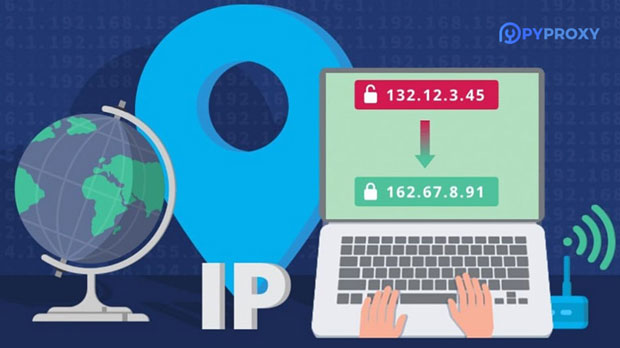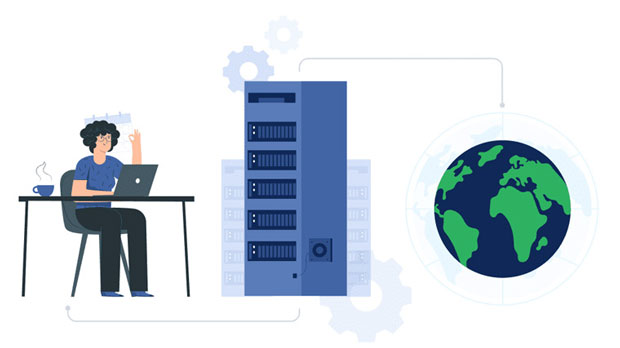In today's digital age, internet privacy and security are major concerns for individuals and organizations alike. The growing number of cyber threats, data breaches, and surveillance practices have made online privacy a critical issue. Anonymous proxies serve as an effective solution to protect users' privacy by masking their real IP addresses, preventing websites and third parties from tracking their online activities. By routing traffic through remote servers, anonymous proxies allow users to browse the internet anonymously, thus safeguarding personal data, hiding browsing habits, and enhancing overall online security. Understanding Anonymous ProxiesAnonymous proxies are servers that act as intermediaries between a user’s device and the internet. When a user connects to the internet through an anonymous proxy, their requests are routed through the proxy server rather than directly from the user’s device. This effectively hides the user’s real IP address and replaces it with the IP address of the proxy server. As a result, websites and online services cannot directly track the user’s location or identity, offering enhanced privacy and security.How Do Anonymous Proxies Improve Privacy?One of the primary benefits of using an anonymous proxy is the enhancement of privacy during online browsing. With the increasing use of tracking technologies such as cookies, web beacons, and IP-based tracking, online activities are often monitored. However, by using an anonymous proxy, users can shield their identity and prevent websites from collecting sensitive data, such as their IP address, browsing history, and geographical location.IP Address MaskingA major function of anonymous proxies is IP address masking. Every device connected to the internet has a unique IP address that can be used to trace the user’s location and identity. By masking the original IP address with that of the proxy server, users can ensure their personal information remains private. This is especially useful for individuals who wish to protect their anonymity, particularly when using public Wi-Fi networks or accessing sensitive information online.Geographic Location ConcealmentIn addition to hiding the real IP address, anonymous proxies also allow users to conceal their geographical location. This is particularly important when accessing content that may be restricted based on the user’s region. By using a proxy server located in a different country, users can bypass geo-restrictions, access region-specific content, and maintain a higher level of privacy while browsing.Bypassing Censorship and SurveillanceIn some regions, governments or organizations impose strict censorship on the internet, blocking access to certain websites or content. By using an anonymous proxy, users can bypass these restrictions and access the internet freely, without fear of surveillance or censorship. This is particularly useful for individuals living in countries with strict internet policies, allowing them to communicate and browse without restrictions.Improved Security Through EncryptionAnother significant advantage of using an anonymous proxy is enhanced security. Many anonymous proxies use encryption techniques to secure the communication between the user’s device and the proxy server. This helps prevent hackers or malicious actors from intercepting sensitive data, such as login credentials or personal information. Encrypted connections are particularly important when using unsecured public networks, where the risk of data theft is higher.How Do Anonymous Proxies Enhance Online Security?Anonymous proxies not only provide privacy but also enhance online security. By masking the user's identity and data, they reduce the chances of cyberattacks such as phishing, identity theft, and fraud. Below are some ways anonymous proxies contribute to better online security.Protection Against Cyber ThreatsBy hiding the real IP address, anonymous proxies reduce the chances of users becoming targets for cyberattacks, such as Distributed Denial of Service (DDoS) attacks or hacking attempts. Attackers often target specific IP addresses, and by using a proxy, users make it significantly harder for malicious actors to pinpoint their location or identity.Prevention of Tracking and ProfilingAnonymous proxies prevent online entities from tracking users' browsing behavior. Advertisers and websites often create detailed profiles of users based on their browsing habits, which can be used for targeted advertising or even identity theft. By masking the user’s IP address, anonymous proxies help protect users from unwanted tracking and profiling, offering an extra layer of privacy.Secure Access to Sensitive InformationUsing an anonymous proxy to access sensitive information adds an extra layer of security. Whether accessing online banking services, shopping websites, or private social media accounts, using a proxy helps ensure that communication is secured and that personal information is protected from hackers or unauthorized entities.Anonymous Proxy Limitations and ConsiderationsWhile anonymous proxies offer significant advantages in terms of privacy and security, there are some limitations and considerations that users must be aware of.Reduced Speed and LatencyOne of the main drawbacks of using an anonymous proxy is the potential reduction in browsing speed. Since internet traffic is routed through a proxy server, it can result in increased latency and slower speeds. The speed reduction may vary depending on the location of the proxy server and the server’s capacity.Not All Proxies Are SecureNot all anonymous proxies are created equal. Some proxies, particularly free ones, may compromise user privacy and security. Some may log users’ activities, making them vulnerable to third-party access. It is crucial to choose a reputable proxy provider that offers encryption and ensures that user data is not logged or shared.Legal and Ethical ConsiderationsIn some cases, using anonymous proxies may violate the terms of service of certain websites or platforms. Users should be mindful of local laws and regulations regarding the use of proxies and avoid using them for illegal or unethical activities.ConclusionAnonymous proxies are a powerful tool for enhancing browsing privacy and security. They offer a range of benefits, including IP address masking, encryption, and the ability to bypass geo-restrictions and censorship. By using anonymous proxies, users can protect their personal information, reduce the risk of cyberattacks, and enjoy a more secure and private browsing experience. However, it is important to choose a reputable provider and be aware of potential limitations, such as slower speeds and the legal implications of proxy use. Ultimately, the use of anonymous proxies can be an essential step in safeguarding online privacy and security in an increasingly connected world.
Jul 01, 2025


































































